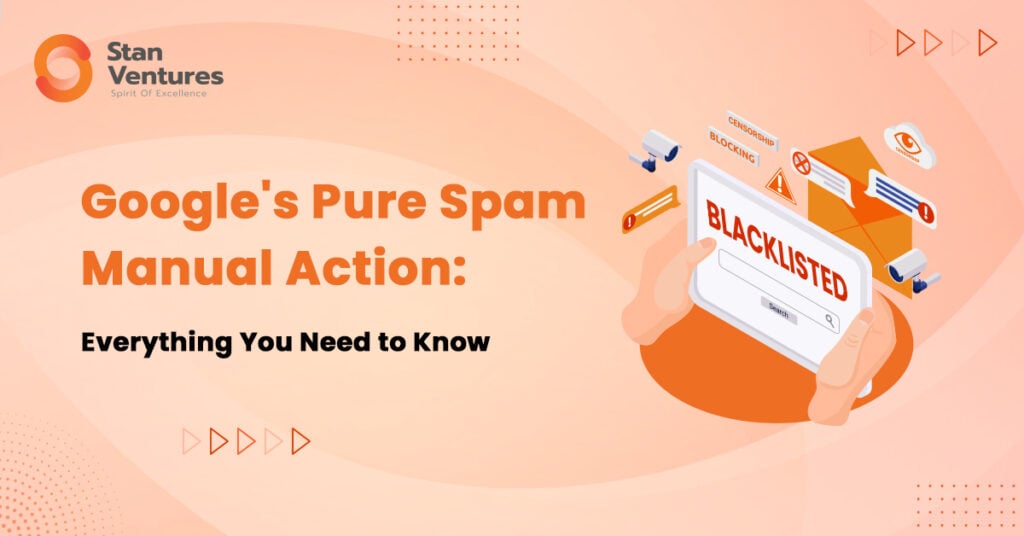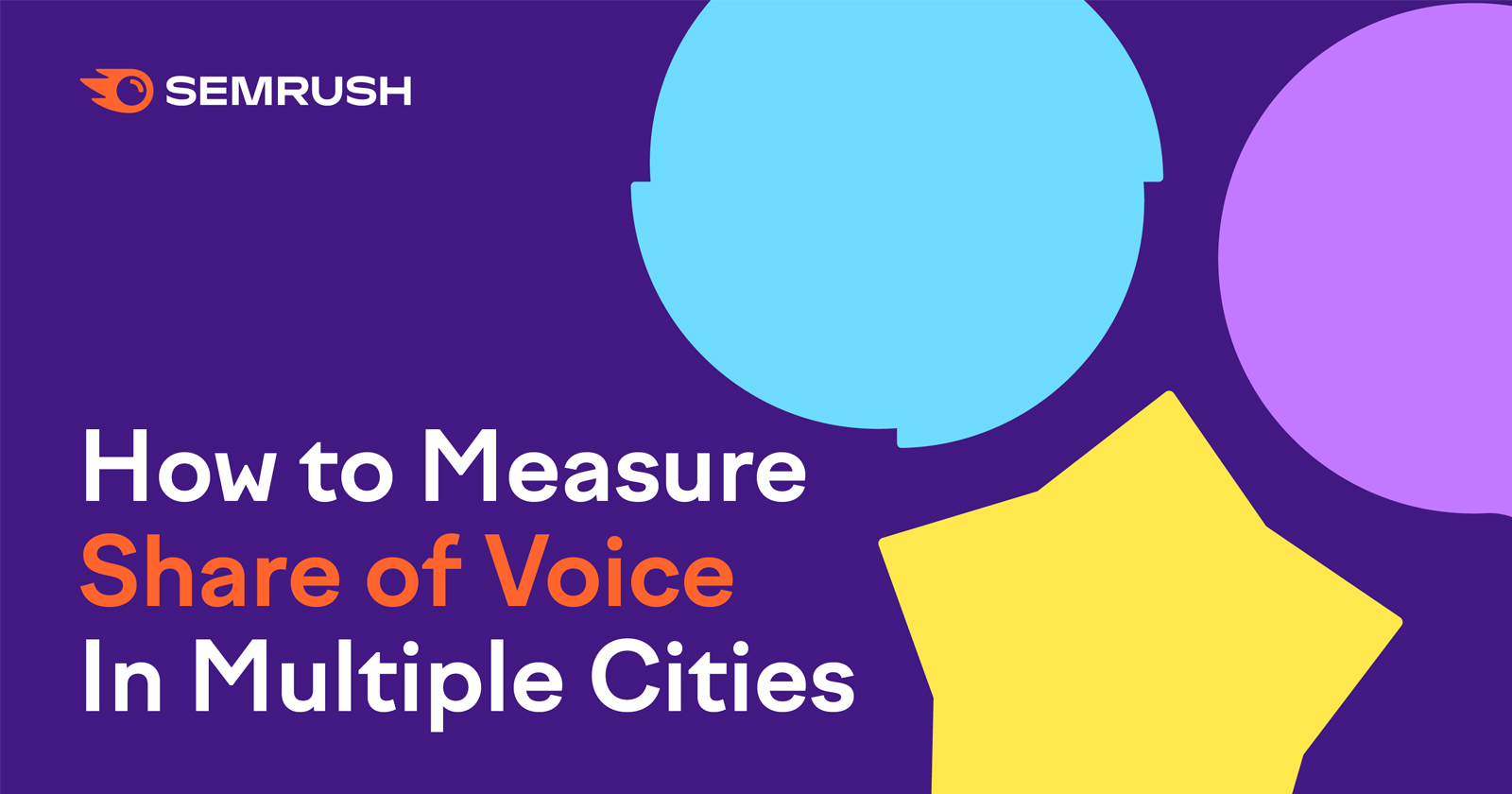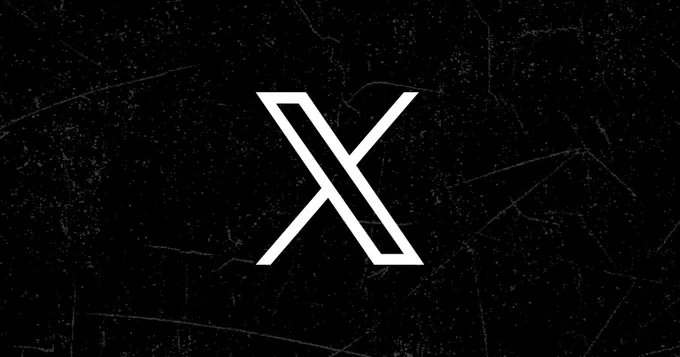Google’s Pure Spam Manual Action: Everything You Need to Know
Are you seeing a message in your Google Search Console that says “Pure Spam Problem on yoursite.com”? If so, your website will no longer appear in Google search results. If you are trying to understand why Google did this...

Are you seeing a message in your Google Search Console that says “Pure Spam Problem on yoursite.com”? If so, your website will no longer appear in Google search results. If you are trying to understand why Google did this to your site, continue reading this blog.
However, if you knowingly indulge in activities that fall under the pure spam category, which includes content scraping, clocking, sneaky redirects, and auto-generated content that offers no value, that means you aggressively taunted Google’s algorithm, and getting back to Google search is going to be almost impossible.
In the days following the March 2024 Core Update, our account managers informed me that there had been a recent uptick in the number of people seeking Google Penalty Recovery assistance. While some of them had websites that inadvertently got impacted by the update, most were knowingly involved in practices that Google termed pure spam tactics.
In this blog, I want to discuss a few scenarios where the pure spam manual action can be reversed through a reconsideration request. I will also add the scenarios where Google outrightly rejects a reconsideration request.

6 Scenarios Wherein Pure Spam Manual Action Can Be Reversed
Previously Used for Spam
I frequently encounter this from unsuspecting clients who buy new domains from untrustworthy brokers. At least a few website owners purchase domains to see if they are relevant; however, they may enter dangerous waters.
Suppose the domain they purchased was previously involved in spam activities, and Google has already taken manual action against them. In that case, the new domain owner will end up on the receiving end without any mistake.

Example: Jane buys a domain, “examplewellness.com,” previously used for publishing scrapped health supplement blogs. She launched a legitimate wellness blog but didn’t add it to the search console. She doesn’t file a reconsideration request, which results in Google not knowing the domain’s disassociation with its past activities.
Reason for Pure Spam Action: Google still associates the domain with its previous spammy activities.
Ways to Fix: Jane needs to populate the site with legitimate, high-quality content that aligns with her wellness blog vision. She should then file a reconsideration request with Google, explaining that the domain has a new owner and purpose. Demonstrating the site’s complete overhaul and commitment to valuable content can help lift the penalty.
Automatically Generated Content
Google can consider websites primarily consisting of AI-generated text that makes little to no sense, including content that has been auto-translated or slightly modified from other sources, as pure spam sites.

Example: A website, autoblogcontent.com, uses software to translate articles, then employs AI to rephrase them and post the content without human review. This results in text that could be clearer for users to understand and find valuable.
Reason for Pure Spam Action: The site’s content is recognized as autogenerated gibberish, lacking human value or coherent meaning, and falls under Google’s definition of pure spam.
Ways to Fix: The site owner must remove all auto-generated content and replace it with original, well-written articles. Ensuring that content provides value to readers and is created through human effort is vital. After making these changes, the owner can submit a reconsideration request to Google.
Scraped Content
Sites slapped with a Scraped Content manual action republish content from other sites without adding original content or value. Google even hunts down websites that try to modify the content only slightly using article spinners. Websites that publish aggregated content from various sources without substantial value addition are also prone to pure spam manual action.

Example: “seoscraper.com” collects and publishes SEO articles from other publishers without adding original content or commentary, effectively creating a repository of plagiarised articles.
Reason for Pure Spam Action: Google views the site as offering no unique value since it only republishes content found elsewhere without original contributions or significant modification.
Ways to Fix: The site must start producing original content, such as fundamental research-based SEO articles or articles based on the latest trends in the industry with a unique perspective. Incorporating user-generated content and reviews could also add value. Once originality is established, the site can appeal the penalty. However, it may take even more time for the content to appear in the top positions as Google’s Helpful Content system will keep a close watch on the website for many months before deciding to release it from the sandbox.
Cloaking
Google strongly advises against cloaking as it provides a bad user experience. When the user comes to the page seeking the information found in the search snippet that appears on Google, they see something different. Websites use multiple strategies to cloak the content.
This includes:
User-agent Cloaking detects the search engine user agent and shows optimized content to crawlers while showing a different version to regular users. IP-based Cloaking uses IP address databases to identify visits from search engine crawlers and serves them a different, optimized version of the content. JavaScript Cloaking shows content to users through JavaScript that search engines can’t execute, effectively hiding it from crawlers. HTTP Referrer Cloaking checks the HTTP referrer to identify visits from search engines and serves them a different version of the site. Flash-based Cloaking Presents content-rich Flash to users but a text-based, keyword-optimized version to search engine crawlers, exploiting search engines’ difficulty indexing Flash content. (This method is no longer used, as Flash has become almost extinct.)Example: “bestdealstoday.com” shows users shopping deals but presents completely different, keyword-stuffed pages to Google’s crawlers to boost SEO rankings.
Reason for Pure Spam Action: Cloaking blatantly violates Google’s Webmaster Guidelines, showing different content to Google than to users.
Ways to Fix: The website must ensure that users and Google’s crawlers have the same content. Removing cloaking scripts or plugins and aligning the site’s content with Google’s guidelines is essential. Following this, a reconsideration request can be submitted.
Unnatural Links
While not explicitly labeled as pure spam, a site with a combination of issues like thin content, autogenerated content, and unnatural links might be penalized as pure spam instead of receiving individual penalties for each issue.
Example: “quickloansnow.com” uses automated tools to create thousands of spammy backlinks from irrelevant forums and blogs, aiming to improve its search rankings artificially. Additionally, they create hundreds of Payday Loan pages for different locations with no supporting content. Their content is just a paraphrased version of their competitor’s content.
Reason for Pure Spam Action: While primarily an issue of link schemes, combining thin content and unnatural links can trigger a pure spam action due to the site’s low quality and manipulative tactics.
Ways to Fix: The site must remove or disavow the unnatural links and focus on building high-quality content that attracts legitimate backlinks. Improving site quality and engaging in ethical SEO practices are critical steps before requesting reconsideration from Google.
5 Scenarios where getting your site out of Google Manual Action is Almost Impossible
Persistent Thin Affiliate Marketing
Scenario: A website exclusively hosts affiliate links and product listings from other websites without providing additional original content, reviews, or comparative analysis. The site solely aims to funnel users to affiliate products for commissions without offering insightful information or user benefits.
The challenge in Reversal: If the website’s primary function only evolves beyond serving as a thin affiliate gateway, it needs to include the unique value that Google seeks to include in its index. Without significant content improvement and a shift towards providing genuine user benefits, reversing a manual action becomes unlikely.
Serial Content Scraping and Republishing
Scenario: A site operator consistently scrapes content from various sources across the web to populate their site, making minimal to no changes to the original content. This practice is often automated, leading to a website filled with duplicated content aimed at generating ad revenue.
Challenge in Reversal: Google’s algorithm and manual review processes are designed to detect and penalize sites that do not contribute original content. Sites that do not pivot to creating or significantly transforming content to add value will find it nearly impossible to have a manual penalty lifted. Usually, such sites will only file a reconsideration request if they will continue looking for easy money.
Use of Cloaking and Deceptive Practices
Scenario: A website that intentionally cloaks content different from what is shown to Google’s crawlers is looking only for monetary benefit, and there is no way they would mend the way. They usually kill the site and start a new one using the same cloaking strategy.
Challenge in Reversal: This blatant violation of Google’s Webmaster Guidelines reflects an intent to deceive users and Google. Unless the site owner undertakes a complete overhaul of the site’s practices and purposes, aligning with Google’s guidelines, the manual action is unlikely to be reversed
Excessive Link Schemes for Monetization
Scenario: A website participates in or hosts extensive link schemes, including buying or selling backlinks, excessively exchanging links, or using automated programs to create links, all intended to manipulate page ranking for profit. These sites look only for monetary benefit; once hit by manual action, these site owners abandon such sites and start new ones. They would invest in starting a new site and updating its content rather than the one hit by a manual action. Additionally, there are far fewer takers for a site with a history of Google Manual action.
The challenge in Reversal: If a site’s primary strategy for monetization involves manipulating search engine rankings through unnatural links without showing commitment to ceasing these practices and cleaning up its link profile, Google is unlikely to reverse the manual action.
Irreversible Reputation Damage
Scenario: A website that has been heavily involved in fraudulent activities, scams, or spreading malware, leading to severe reputational damage in the eyes of both users and search engines, will never make it back to the search results page. These sites may also face legal battles, making it almost impossible to return to Google search.
The challenge in Reversal: In cases where a website’s actions have caused significant harm to users or violated laws, reversing a Google manual action becomes not just a matter of policy compliance but also of trust restoration. If the website’s history is marred by severe harmful activities, starting anew with a different domain and a legitimate business model might be the only viable path forward.
Comom FAQ About Google Pure Spam Manual Action
Q1: Why might Google flag my new website as “pure spam”?
A website might be flagged as “pure spam” if Google detects manipulative or deceptive SEO practices, such as Cloaking, autocloakingly generated, or scraped content. This can sometimes occur for new websites due to the domain’s previous history of spammy behavior, even if the current owner is unaware and has not engaged in such practices.
Q2: What steps should I take if my website is wrongly flagged as “pure spam”?
Check the domain’s history: Use tools like the Wayback Machine or backlink/history checkers to investigate your domain’s past content and any spammy practices it may have been involved in. Clean up the site: Ensure all spammy content is removed and any old, unrelated URLs return a 404 status code. This includes checking for and eliminating any hidden or historical content lurking on the server. Submit a reconsideration request: Through Google Search Console, explain that you are a new owner and detail the steps you’ve taken to clean up the site. It’s helpful to provide documentation of domain purchase and any efforts to align the site with Google’s Webmaster Guidelines.Q3: How can I avoid buying a domain with a spammy history?
Before purchasing a domain, conduct thorough research on its history. Use tools like the Wayback Machine and domain backlink checkers to look for any signs of previous spammy activities. Checking for a clean history can save you from inheriting penalties and issues with Google ranking.
Q4: How long does it take for a reconsideration request to be reviewed?
The time frame for reviewing a reconsideration request can vary widely. Some users report responses within days, while others may wait weeks. If Google adjusts or revokes some manual actions in response to your request, these changes may take a few days to reflect in the Google Search Console.
Q5: What if my reconsideration request is denied?
If your reconsideration request is denied, it’s essential to review your website further and ensure that all Google Webmaster Guidelines are being followed. Sometimes, the denial may be due to overlooking some aspect of the site’s content or structure that Google still considers spammy. Considering a new domain without a spammy history might be the best action if all else fails.
Q6: Can a domain with a “pure spam” history fully recover?
Recovery is possible but challenging. It requires a thorough cleanup of all spam-related issues, successful reconsideration requests, and time for Google to re-evaluate the site’s content and practices. However, in highly egregious historic spam cases, Google might hesitate to re-index the site, making recovery difficult.
Q7: Should I buy a new domain if my current one is flagged for “pure spam”?
If you’ve made multiple unsuccessful attempts to clear a “pure spam” manual action through reconsideration requests and have ensured your site fully complies with Google’s guidelines, starting fresh with a new domain may be a practical solution. However, thoroughly research the history of the new domain to avoid repeating the same issue.

 Troov
Troov 







![Perfectly Optimized Content From Start to Finish [Ebook] via @sejournal, @duchessjenm](https://cdn.searchenginejournal.com/wp-content/uploads/2022/03/featured-no-cta-6220ba7f8f065-sej.jpg)
























